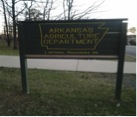Lucy Chou, Ross University
Experiences, Winner
Over my winter break in December 2013, I was accepted for a 2 week externship at Veterinary Emergency Referral Group (VERG) in New York. VERG is a large referral practice with 2 locations in Brooklyn that offers specialty services as well as emergency 24 hour care. I spent my time in their larger North VERG hospital with the Emergency, Ophthalmology and Surgery Services.
The day would start with morning hospital wide rounds where the staff veterinarians, interns and externs would gather to discuss the cases and treatment plans for the hospitalized animals. Since VERG also has a large internship program there would occasionally be morning lectures given by one of the senior staff doctors prior to rounds. During my visit, I attended a lecture given by their neurologist Dr. Kara Sessums. She ran though clinical cases to discuss diagnostic tests, lesion localization, and treatment options. The part of the lecture that stood out in my mind was the discussion of treatment options because even though we all learn about it school, I find it to be one of the most challenging aspects of veterinary medicine to get a handle on. Throughout the discussion I could tell that Dr. Sessums was a seasoned clinician with years of experience in the way she discussed her preferred treatment protocols for various neurological cases.
The rest of the day would continue with client appointments or emergency triages depending on the service I was shadowing. In both cases, I had the opportunity to see the structure of the internship program. The senior clinicians were great mentors to the interns and pushed them to think critically about the cases to come up with differential diagnosis and propose a plan of action. I saw how this could be especially challenging in emergency cases where its high stress, fast paced and interns are really pushed to develop their skills to become an experienced clinician.
This externship was a perfect opportunity to see interesting cases that often get referred to specialty practices. I remember an amazing surgery I witnessed where a 1 year old male Labradoodle named Fritz came in on emergency recumbent and catatonic. Following a CT scan, a diagnosis of severe hydrocephalus was made. The clinical signs matched the dramatic CT scan that showed only a thin layer of brain material left due to the severe brain compression. Even with a poor prognosis, the owners elected to move forward to put in a ventriculoperitoneal shunt which is basically a piece of plastic tubing imbedded in the brain and tunneled to the abdominal cavity to drain the buildup of CSF fluid in the cranium. It was amazing to see the neurologist, Dr. Sessums, and the surgeon, Dr. Karen Cherrone, work together to drill into the skull, place the shunt and then tunnel it through the subcutaneous layer. They showed me how it would operate with a little pump that was also tunneled through the subcutaneous tissue. The owners would be responsible for pushing on the pump to drain the fluid as needed to prevent the massive CSF build-up. I remember this case being at the being of my visit so I got to watch the daily progression of recovery. The very next day, Fritz was already sitting sternal and able to ambulate somewhat with a special body harness. Each day, his head bobbed less and he was able to support himself more and more. By the time he left the hospital he was a completely new dog that had come out of his catatonic state and now responsive to stimulus and aware of his surroundings.
Another interesting case was a 6 month old kitten named Lucky that came in non-ambulatory in all 4 limbs. After radiographs were taken, it was obvious that all 4 legs had suffered serious fractures that would need surgical intervention for any possibility at future ambulation and use of the appendages. After further physical exam and history gathering, a working diagnosis of brittle bone disease or osteogenesis imperfecta was made by a joint consult between the Surgery and Internal Medicine Services. The owners elected to proceed with surgery to repair all four limbs knowing that there would be a long road of recovery and supportive care.
These were just a couple of the cases that I was exposed to. After my externship, I walked away with some great experiences shadowing the veterinarians at VERG. I would recommend this externship experience for anyone looking for a fast paced environment with a constant flow of interesting medical cases and the opportunity to see advanced treatment procedures.
 Sunday, January 7, 2018 at 05:55PM
Sunday, January 7, 2018 at 05:55PM 
 AVMA,
AVMA,  Externship in
Externship in  Extern and Internships
Extern and Internships 


